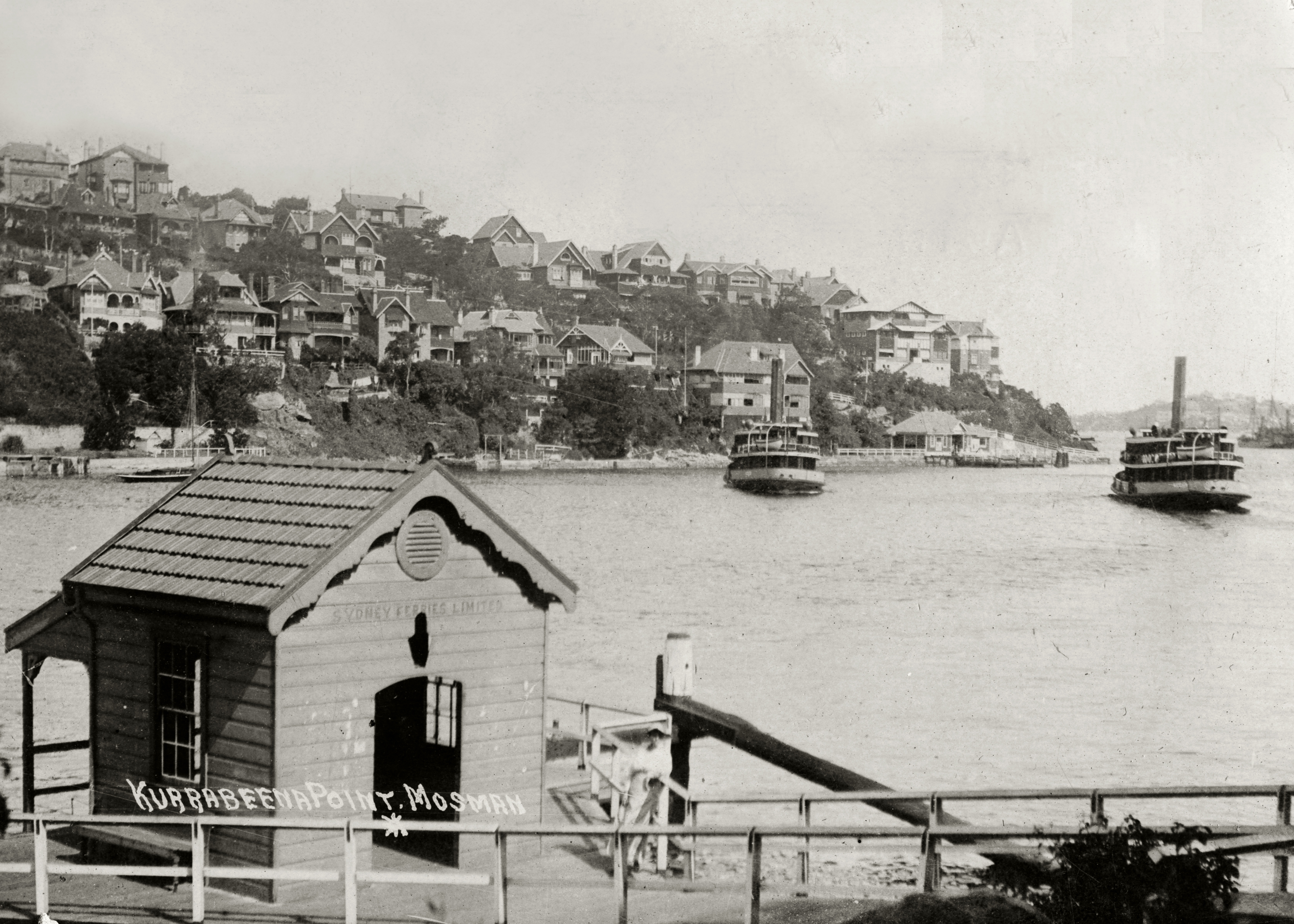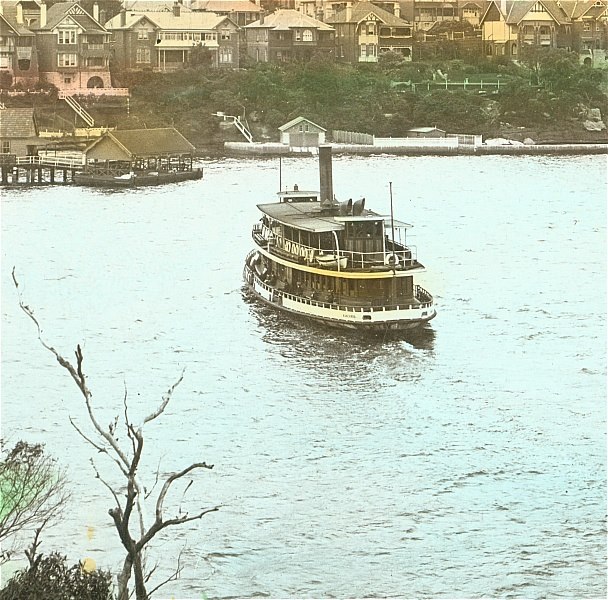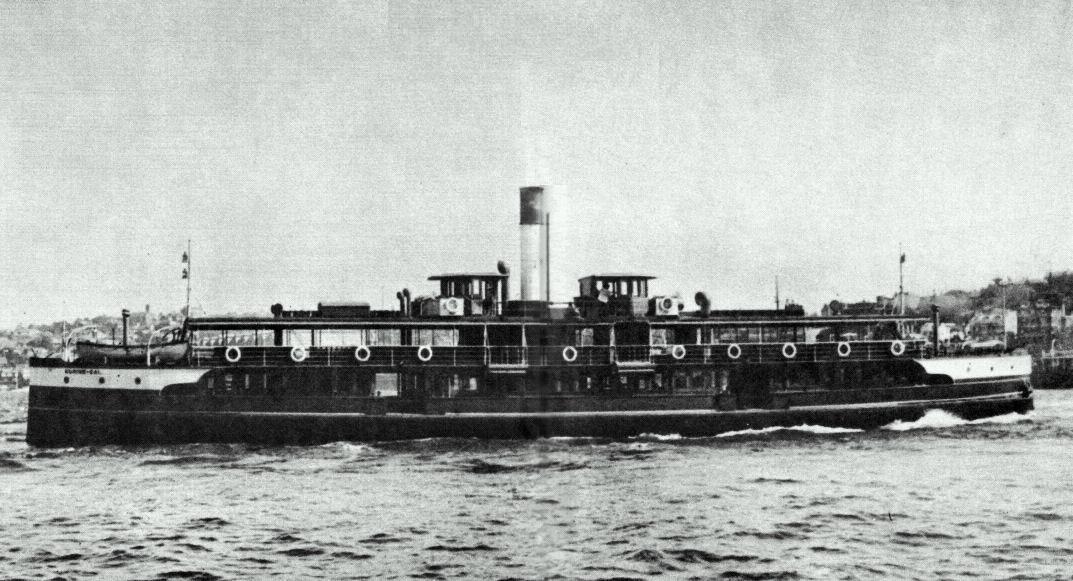|
Kirawa
''Kirawa'' was a ferry on Sydney Harbour. She was a near identical sister vessel with '' Kanangra'' both of which were launched in 1912 during the early-twentieth pre-Sydney Harbour Bridge boom years of Sydney Ferries Limited. They were the first of four steel-hulled " K-class" ferries (the majority of the type were timber-hulled). At 45 metres in length and with passenger capacity of almost 1,000, and they were among the largest of the Sydney Ferries Ltd fleet. At launch, the press noted ''Kirawa'' was built for the then new Cremorne service, which was then run separately to the Mosman route. She would, however, soon also work the Mosman route with sister ''Kanangra''. ''Kirawa'' was decommissioned in 1953. Sister ''Kanangra'', however, was in passenger service until 1985 and is now part of the Sydney Heritage Fleet and is moored at Rozelle Bay undergoing restoration. Sydney Ferries Limited generally choose Australian Aboriginal names for the early twentieth "K-class" steamer ... [...More Info...] [...Related Items...] OR: [Wikipedia] [Google] [Baidu] |
Kirawa & Kanangra Passing In Mosman Bay C
''Kirawa'' was a ferry on Port Jackson, Sydney Harbour. She was a near identical sister vessel with ''Kanangra (ferry), Kanangra'' both of which were launched in 1912 during the early-twentieth pre-Sydney Harbour Bridge boom years of Sydney Ferries Limited. They were the first of four steel-hulled "Sydney K-class ferry, K-class" ferries (the majority of the type were timber-hulled). At 45 metres in length and with passenger capacity of almost 1,000, and they were among the largest of the Sydney Ferries Ltd fleet. At launch, the press noted ''Kirawa'' was built for the then new Cremorne, New South Wales, Cremorne service, which was then run separately to the Mosman route. She would, however, soon also work the Mosman route with sister ''Kanangra''. ''Kirawa'' was decommissioned in 1953. Sister ''Kanangra'', however, was in passenger service until 1985 and is now part of the Sydney Heritage Fleet and is moored at Rozelle Bay undergoing restoration. Sydney Ferries Limited generall ... [...More Info...] [...Related Items...] OR: [Wikipedia] [Google] [Baidu] |
Kanangra (ferry)
''Kanangra'' is a retired ferry on Sydney Harbour. She was launched in 1912 during the early-twentieth century pre-Sydney Harbour Bridge boom years of Sydney Ferries Limited. She and her close "sister" ferry, ''Kirawa'' (also 1912), were the first of four steel-hulled " K-class" ferries, the majority of which were timber-hulled. Both 45 metres in length and with passenger capacities of over 1,000 passengers each, the two were among the largest of the Sydney Ferries Limited fleet and they mainly served the busy Cremorne and Mosman routes. ''Kanangra'' was retired as a ferry in 1985 and is moored at Rozelle Bay as part of the Sydney Heritage Fleet and is undergoing restoration. It is the last remaining ferry built for Sydney Ferries Limited in the early twentieth century pre-Sydney Harbour Bridge peak. Sydney Ferries Limited generally chose Australian Aboriginal names for the early twentieth "K-class" steamers. "Kanangra" is thought to mean "beautiful view". Background ''Ka ... [...More Info...] [...Related Items...] OR: [Wikipedia] [Google] [Baidu] |
Sydney K-class Ferries
The K-class ferries were a group of double-ended screw steam ferries run by Sydney Ferries Limited and its government successors on Sydney Harbour. The company introduced more than two dozen of the vessels from the 1890s through to the early twentieth century to meet the booming demand for ferry services across Sydney Harbour prior to the opening of the Sydney Harbour Bridge in 1932. The K-names were largely Australian Aboriginal names with their meanings listed in the table below. Design The K-class were not a group of identical ferries - they were delivered in batches of two or three identical sister ships - rather they were a general type of vessel that ranged in sized but shared a typical form. They were all double-deck, double-ended screw steamers with two raised wheelhouses and a single tall funnel. Apart from a few early vessels with open upper decks that were later enclosed, the K-class had enclosed upper and lower saloons with lower deck outdoor seating around the vessel ... [...More Info...] [...Related Items...] OR: [Wikipedia] [Google] [Baidu] |
Sydney K-class Ferry
The K-class ferries were a group of double-ended screw steam ferries run by Sydney Ferries Limited and its government successors on Sydney Harbour. The company introduced more than two dozen of the vessels from the 1890s through to the early twentieth century to meet the booming demand for ferry services across Sydney Harbour prior to the opening of the Sydney Harbour Bridge in 1932. The K-names were largely Australian Aboriginal names with their meanings listed in the table below. Design The K-class were not a group of identical ferries - they were delivered in batches of two or three identical sister ships - rather they were a general type of vessel that ranged in sized but shared a typical form. They were all double-deck, double-ended screw steamers with two raised wheelhouses and a single tall funnel. Apart from a few early vessels with open upper decks that were later enclosed, the K-class had enclosed upper and lower saloons with lower deck outdoor seating around the vessel ... [...More Info...] [...Related Items...] OR: [Wikipedia] [Google] [Baidu] |
Sydney Ferries Limited
Sydney Ferries Limited operated ferry services on Sydney Harbour from 1900 until June 1951. The company grew out of the North Shore Steam Ferry Company and took over smaller ferry operators to become the largest ferry operator in Sydney's history. Without a physical connection across the harbour, demand for ferry services to developing areas on the North Shore rose dramatically and Sydney Ferries commissioned 27 large ferries in its own right between 1900 and 1922. The company named its vessels with Australian Aboriginal words beginning with "K". The 1932 opening of the Sydney Harbour Bridge saw the companies annual patronage drop from 40 million to 15 million. Nineteenth century beginnings The first regular passenger ferry services across the harbour began in the 1840s and 1850s, at which time the Gerrard Brother's ran paddle steamers ''Ferry Queen'', ''Brothers'', and ''Agenoria''. ''Herald'' was sent out from England for the North Shore Steam Company and later for E Evans ... [...More Info...] [...Related Items...] OR: [Wikipedia] [Google] [Baidu] |
Kurraba (ferry)
''Kurraba'' and ''Kirribilli'' were two similar " K-class" ferries on Sydney Harbour. Launched in 1899 and 1900 respectively, the two timber-hulled steamers were built for Sydney Ferries Limited during the boom in cross-harbour ferry travel prior to the opening of the Sydney Harbour Bridge. When built, they were the largest of the cross-harbour ferries and brought new levels of comfort for passengers. They were the first true examples of what would come to be known as the "K-class" ferries - a group of 25 double deck, double-ended, predominantly timber-hulled (four later versions had steel hulls), screw ferries propelled by triple expansion steam engines. Built for, and initially used on, the short but busy cross-harbour route between Circular Quay and Milsons Point, they were also used frequently on the Mosman route. Along with 17 others, the two ferries were sold for breaking up in 1934 following the opening of the Sydney Harbour Bridge in 1932. Background Both ferries were bu ... [...More Info...] [...Related Items...] OR: [Wikipedia] [Google] [Baidu] |
Barrenjoey (ferry)
The MV ''North Head'' (formerly SS ''Barrenjoey'') was a ferry operated by the Port Jackson & Manly Steamship Company and its successors on the Manly service from 1913 until 1985. The vessel was launched as ''Barrenjoey'', a steamer and one of the six ''Binngarra''-type Manly ferries which were built between 1905 and 1922. In 1951, she was converted to diesel-electric power, completely rebuilt and renamed ''North Head''. She was removed from service in 1985 following the introduction of the ''Freshwater''-class ferries. She spent time in Hobart as a floating restaurant and, in 2000, she was taken to Cairns where she remains grounded and in deteriorating condition. The name "Barrenjoey" was taken from the headland at the northern tip of Pittwater. "North Head" is the northern headland at the entrance to Sydney Harbour. Background The Port Jackson & Manly Steamship Company's fleet transitioned comparatively late to screw propelled vessels and the fleet comprised mostly pad ... [...More Info...] [...Related Items...] OR: [Wikipedia] [Google] [Baidu] |
Kirrule-type Ferry
The ''Kirrule''-type ferries (or Kubu-class) - ''Kiandra'', ''Kirrule'' and ''Kubu'' - were three identical K-class ferries that operated on Sydney Harbour by Sydney Ferries Limited. The three steam ferries were built in 1910, 1911 and 1912 at the height of the boom in ferry traffic across Sydney Harbour prior to the opening of the Sydney Harbour Bridge. They were the second largest type of inner harbour vessels and built for the rapidly increasing North Shore demand. Sydney Ferries Limited generally choose Australian Aboriginal names for the early twentieth "K-class" steamers. "Kiandra" is a corruption of Aboriginal 'Gianderra' for 'sharp stones for knives' and a town in NSW. ''Kirrule'' is thought to mean 'aroused', and 'Kubu' "oak tree". Design & construction When built, they were the most refined of the K-class ferries, and among the largest of the type. As with all Sydney ferries at the time, they were steamers but were not among those ferries later converted to diesel ... [...More Info...] [...Related Items...] OR: [Wikipedia] [Google] [Baidu] |
The Evening News (Sydney)
''The Evening News'' was the first evening newspaper published in Sydney, New South Wales, Australia. It was published from 29 July 1867 to 21 March 1931. The Sunday edition was published as the ''Sunday News''. History ''The Evening News'' was founded in 1867 by Samuel Bennett and was regarded as a "less serious read" than other Sydney newspapers. In 1875 labour difficulties forced Bennett to merge ''The Evening News'' with another of his papers, '' The Empire''. ''The Evening News'' continued to be published until 1931 at which point it was closed by Associated Newspapers, who had acquired most Sydney newspaper titles by that time. A Sunday morning edition was published as ''Sunday News'' from 1919-1930. Digitisation The paper has been digitised as part of the Australian Newspapers Digitisation Program project of the National Library of Australia The National Library of Australia (NLA), formerly the Commonwealth National Library and Commonwealth Parliament Library, is ... [...More Info...] [...Related Items...] OR: [Wikipedia] [Google] [Baidu] |
Kameruka
''Kameruka'' and ''Kamiri'' were near identical ferries that served on Sydney Harbour. ''Kamiri'' was built in 1912 and ''Kameruka'' was launched on 8 February 1913. They were double-ended " K-class" steam ferries, a type that was prolific on Sydney Harbour in the early 20th century boom in cross-Sydney Harbour ferry transport before the 1932 opening of the Sydney Harbour Bridge. ''Kamiri'' was laid up in 1951 following the New South Wales government take-over of the Sydney Ferries Limited. ''Kameruka'' was converted to diesel in 1954 and was laid up in 1984. Both ferries were part of a Sydney Ferries Limited tradition of naming their "K-class" ferries with Australian Aboriginal words beginning with "K". "Kamiri" is the name of an Aboriginal tribe and "Kameruka" is thought to mean 'wait til I come'. Design and construction Both were timber vessels built by Morrison & Sinclair Ltd in Balmain. ''Kamiri'' was built in 1912 and used the engine and timbers from the ferry ''Kaludah'' ... [...More Info...] [...Related Items...] OR: [Wikipedia] [Google] [Baidu] |
Daily Advertiser (Wagga Wagga)
''The Daily Advertiser'' is the regional newspaper which services Wagga Wagga, New South Wales Australia and much of the surrounding region. It is published Monday to Friday but also appears as a sister publication called ''The Weekend Advertiser'' on Saturdays. The paper reaches about 31,000 people during its Monday to Friday printing, equating to 85% of all people aged over 14 that live in the paper's main coverage area. History of the paper The paper started its life as '' The Wagga Wagga Advertiser'' and was founded by two wealthy local pastoralists, Auber George Jones and Thomas Darlow. It was first printed on 10 December 1868, only 80 years after the commencement of European settlement in Australia. The paper is older than a large number of city newspapers and is one of the oldest regional newspapers in the country. The first edition was edited by Frank Hutchison, who was an Oxford graduate, and the paper was initially managed by E G Wilton, who had been trained in L ... [...More Info...] [...Related Items...] OR: [Wikipedia] [Google] [Baidu] |
The Daily Telegraph (Sydney)
''The Daily Telegraph'', also nicknamed ''The Tele'', is an Australian tabloid newspaper published by Nationwide News Pty Limited, a subsidiary of News Corp Australia, itself a subsidiary of News Corp. It is published Monday through Saturday and is available throughout Sydney, across most of regional and remote New South Wales, the Australian Capital Territory and South East Queensland. A 2013 poll conducted by Essential Research found that the ''Telegraph'' was Australia's least-trusted major newspaper, with 49% of respondents citing "a lot of" or "some" trust in the paper. Amongst those ranked by Nielsen, the ''Telegraph'' website is the sixth most popular Australian news website with a unique monthly audience of 2,841,381 readers. History ''The Daily Telegraph'' was founded in 1879, by John Mooyart Lynch, a former printer, editor and journalist who had once worked on the ''Melbourne Daily Telegraph''. Lynch had failed in an attempt to become a politician and was lookin ... [...More Info...] [...Related Items...] OR: [Wikipedia] [Google] [Baidu] |








